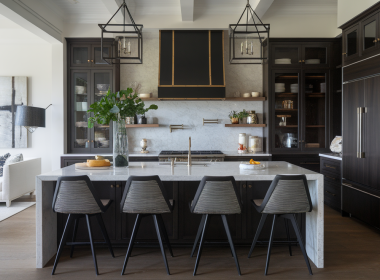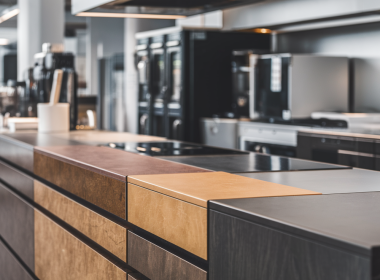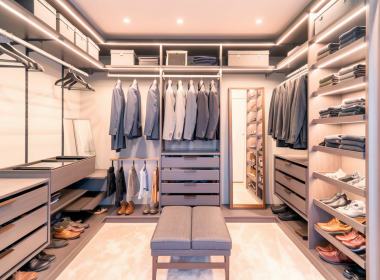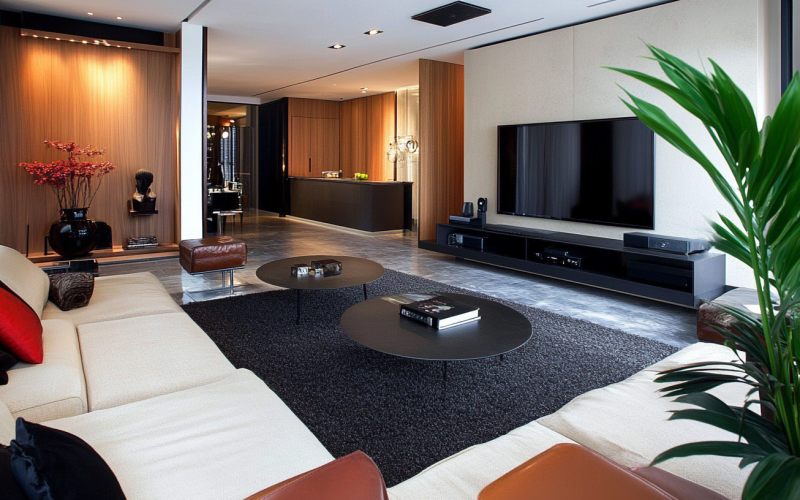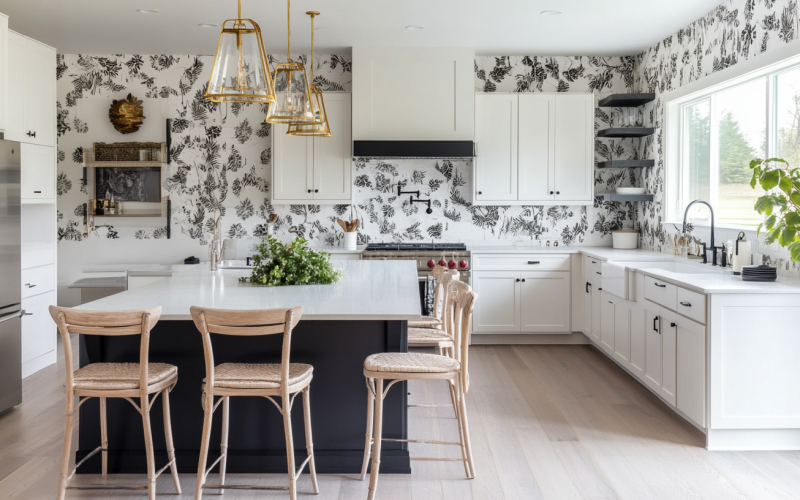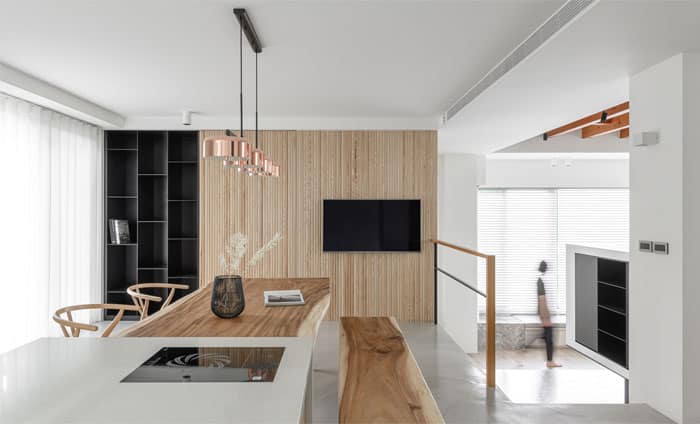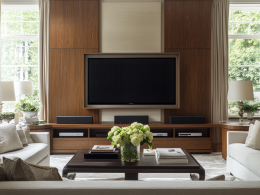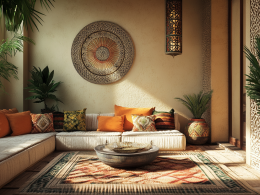Today, small compact apartments are the norm, and it’s challenging residents to make the most of their limited living spaces. The living room is an important space that usually hosts most people, so it requires even more attention in these smaller spaces.
Efficient and thoughtful design is crucial not only for functionality but also for creating a comfortable and inviting atmosphere. In this article, we explore various strategies and innovative ideas to transform compact living rooms into stylish, multifunctional spaces that feel spacious and welcoming.
There are many challenges to designing a small living room, from storage constraints to the need for multifunctional areas. However, these challenges also present opportunities for creative solutions and unique design approaches.
By implementing smart design techniques and embracing the principles of space optimization, it’s possible to create a living room that not only meets your practical needs but also reflects your personal style and enhances your quality of life.
1. Multifunctional Furniture

One of the most effective ways to maximize space in a compact living room is by using multifunctional furniture. If you’re renting an apartment and need to bring your own furniture, this is the perfect option for you. These versatile pieces serve multiple purposes, allowing you to make the most of every square inch of your living area.
Convertible sofas and murphy beds are excellent examples of multifunctional furniture. During the day, a convertible sofa provides comfortable seating for relaxation or entertaining guests.
At night, it can be easily transformed into a bed, making it ideal for studio apartments or living rooms that double as guest rooms. Murphy beds, which can be folded up against the wall when not in use, offer a similar space-saving solution.
Nesting tables and expandable dining sets are another smart choice for small living rooms. Nesting tables can be tucked away when not needed, and pulled out to provide additional surface area when entertaining. Expandable dining tables can be compact for everyday use but extended to accommodate larger gatherings.
Storage ottomans and coffee tables with hidden compartments offer dual functionality by providing both seating or surface area and storage space. These pieces are perfect for stowing away items like blankets, magazines, or remote controls, helping to keep your living room clutter-free.
2. Vertical Space Utilization
In compact apartments, vertical space is the most important asset for maximizing storage and creating a sense of openness. Floor-to-ceiling bookshelves are an excellent way to use vertical space while adding character to your living room. These tall units not only provide ample storage for books and decorative items but also draw the eye upward, creating the illusion of a higher ceiling and a more spacious room.
Hanging planters and wall-mounted storage solutions are also effective ways to make use of vertical space. Wall-mounted shelves, floating cabinets, and pegboards can provide storage and display space without taking up valuable floor area. Hanging planters add a touch of nature to your living room while keeping surfaces clear.
For those with very limited floor space, consider incorporating a loft bed or raised platform. This approach creates an additional level within your living room, potentially providing space for a home office or storage area underneath. While this solution may not be suitable for all apartments, it can be a game-changer in spaces with high ceilings.
3. Clever Storage Solutions
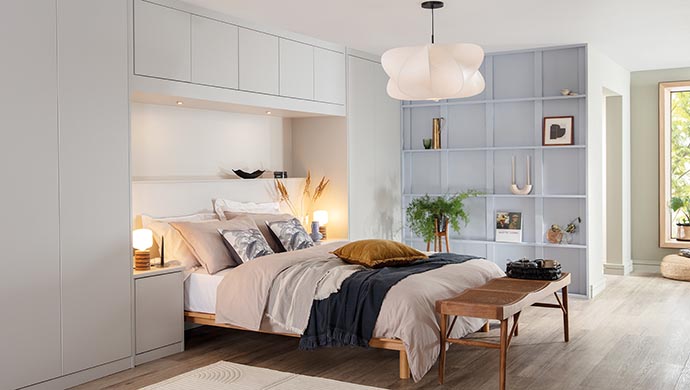
Efficient storage is key to maintaining a tidy and functional living room in a compact apartment. Built-in cabinets and shelving units offer customized storage solutions that can be tailored to your specific needs and the dimensions of your space. These built-in elements can be designed to blend seamlessly with your decor, creating a cohesive look while maximizing storage capacity.
Under-sofa storage drawers are another clever way to utilize often-overlooked space. Many sofas and sectionals now come with built-in storage compartments, perfect for stowing away items like extra bedding, seasonal decor, or rarely used items.
Dual-purpose furniture with hidden storage is also an excellent choice for compact living rooms. For example, a storage bench can provide seating and a place to store shoes or other items. Similarly, a lift-top coffee table can offer hidden storage while also providing a raised surface for working or dining.
4. Optical Illusions and Visual Tricks
Creating the illusion of space is almost as important as actual space-saving techniques in compact living rooms. Strategic mirror placement is one of the most effective ways to make a room appear larger. A large mirror on one wall can visually double the size of your living room, while smaller mirrors placed strategically can reflect light and create a sense of depth.
Light colors and reflective surfaces are also key in creating a sense of spaciousness. Pale walls and ceilings reflect more light, making a room feel brighter and more open. Glossy finishes on furniture or decor items can have a similar effect, bouncing light around the room.
Transparent furniture and glass partitions can help maintain an open feel in your living room. Glass coffee tables, acrylic chairs, or glass room dividers allow light to pass through, reducing visual clutter and creating a sense of continuity in the space.
5. Lighting Techniques

Proper lighting is crucial in any living room, but it takes on added importance in compact spaces. A layered lighting approach, incorporating ambient, task, and accent lighting, can create a sense of depth and make your living room feel more spacious.
Ambient lighting provides overall illumination and can be achieved through ceiling fixtures or recessed lighting. Task lighting, such as reading lamps or under-cabinet lights, provides focused illumination for specific activities. Accent lighting, like wall sconces or picture lights, adds visual interest and can highlight architectural features or artwork.
Wall sconces and pendant lights are particularly useful in small living rooms as they provide necessary illumination without taking up floor or surface space. These fixtures can also serve as decorative elements, adding style and personality to your space.
Lighting systems offer the ability to adjust the brightness and color temperature of your lights, so you can create different moods and atmospheres in your living room. This flexibility can make your space feel larger and more versatile, adapting to different needs throughout the day.
6. Color Schemes and Patterns
The right color scheme can significantly impact the perceived size of your living room. Monochromatic color schemes, which use different shades and tones of the same color, can create a cohesive and spacious feel. This approach reduces visual clutter and creates a seamless flow throughout the space.
While a primarily light color palette can make a room feel more open, strategic use of accent colors can add depth to your living room. Consider incorporating pops of color through accessories, artwork, or a feature wall to create focal points without overwhelming the space.
When it comes to patterns, less is often more in compact living rooms. However, carefully chosen patterns can add personality and style to your space. Consider using patterns in small doses, such as on throw pillows, area rugs, or curtains. Vertical stripes can create the illusion of height, while large-scale patterns can actually make a small space feel larger by providing a sense of proportion.
7. Minimalist Approach

Embracing a minimalist approach can be particularly effective in small living rooms. Start by decluttering your space, keeping only items that are essential or bring you joy. This process not only creates physical space but also contributes to a sense of calm and openness.
Also, pay attention to negative space, or empty areas in your room; this is an important aspect of minimalist design. Rather than trying to fill every corner, allow for some breathing room in your layout. This approach can make your living room feel more spacious and less cramped.
When selecting furniture and decor for a minimalist living room, focus on quality over quantity. Choose well-made, versatile pieces that serve your needs effectively. This approach not only contributes to a cleaner aesthetic but also ensures that each item in your living room earns its place.
8. Incorporating Technology
Smart home devices can be valuable allies in maximizing space and convenience in compact living rooms. Voice-controlled assistants can manage lighting, temperature, and entertainment systems without the need for multiple remote controls or switches. Smart speakers can provide high-quality audio without the bulk of traditional stereo systems.
Wall-mounted TVs are a space-saving essential in small living rooms. They free up floor space and can be adjusted for optimal viewing angles. Consider solutions for hiding wires and cables to maintain a clean, uncluttered look.
Compact entertainment systems, such as soundbars or all-in-one media centers, can provide high-quality audio and video without the need for multiple components. Many of these systems also offer streaming capabilities, reducing the need for additional devices.
Conclusion
Figuring out a plan for a compact living room in a small apartment can be a really fun challenge. By using the tips we have provided in this article, you can maximize every inch of your living room.
Remember that the key to successful small-space living is adaptability and personalization. Don’t be afraid to experiment with different layouts, color schemes, and design elements to find what works best for your lifestyle and preferences. With these strategies in mind, you can transform your compact living room into a comfortable, inviting space that feels much larger than it actually is.


